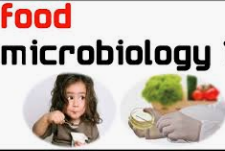MICROBIOLOGY of FOODS Multiple Choice Questions :-
These are very useful & Most Asked Questions in your certification Exam. Read all Online Mock Test Exam Question Bank for Beginners Freshers & Experienced.
1. Most spoilage bacteria grow at
A. acidic pH
B. alkaline pH
C. neutral pH
D. any of the pH
Answer: C
2. The microbiological examination of coliform bacteria in foods preferably use
A. MacConkey broth
B. violet Red Bile agar
C. eosine Methylene blue agar
D. all of these
Answer: D
3. Which of the following acid will have higher bacteriostatic effect at a given pH?
A. Acetic acid
B. Tartaric acid
C. Citric acid
D. Maleic acid
Answer: A
4. Which of the following is not true for the thermal resistance of the bacterial cells?
A. Cocci are usually more resistant than rods
B. Higher the optimal and maximal temperatures for growth, higher the resistance
C. Bacteria that clump considerably or form capsules are difficult to kill
D. Cells low in lipid content are harder to kill than other cells
Answer: D
5. Water activity can act as
A. an intrinsic factor determining the likelihood of microbial proliferation
B. a processing factor
C. an extrinsic factor
D. all of the above
Answer: D
6. Enumeration of microorganism refers to
A. either spiral plating, pour plate or spread plate of a food suspension on to a suitable selective agar, or non-selective plate, depending on the test
B. either spiral plating, pour plate or spread plate of a food suspension on to a suitable selective agar
C. non-selective plating, depending on the test
D. none of the above
Answer: A
7. The different ACC’s between food categories reflect the
A. expected level of contamination of the raw material
B. potential for microbial growth during storage
C. potential shelf life
D. all of the above
Answer: D
8. Examination of the presence / absence of organisms refers to
A. incubation of a food suspension in an enrichment medium followed by inoculation on to a suitable selective medium.
B. incubation of a food suspension in an enrichment medium followed by inoculation on to a non-selective medium.
C. incubation of a food suspension in an enrichment medium
D. none of the above
Answer: A
9. Plate count of bacteria in foods generally use the plating medium consisting of
A. peptone, yeast extract, glucose, sodium chloride, agar and distilled water
B. yeast extract, glucose, sodium chloride, agar and distilled water
C. peptone, glucose, sodium chloride, agar and distilled water
D. peptone, yeast extract, glucose, sodium chloride and distilled water
Answer: A
10. What are the intrinsic factors for the microbial growth?
A. pH
B. Moisture
C. Oxidation-Reduction Potential
D. All of these
Answer: D

MICROBIOLOGY of FOODS Objective Type Questions with Answers
11. Yeast and mould count determination requires-
A. nutrient agar
B. acidified potato glucose agar
C. MacConkey agar
D. violet Red Bile agar
Answer: B
12. The time temperature combination for HTST paterurization of 71.1°C for 15 sec is selected on the basis of
A. Coxiella Burnetii
B. E. coli
C. B. subtilis
D. C. botulinum
Answer: A
13. Aerobic Colony Count (ACC), is also known as
A. Total viable count (TVC)
B. Aerobic plate count (APC)
C. Standard plate count (SPC)
D. All of these
Answer: D
14. Which of the following is true about ISO 2002 method for Salmonella detection?
A. Selenite cystine (SC) broth is replaced by Muller Kauffmann tetrathionate novobiocin broth (MKTTn)
B. Rappaport Vassiliadis (RV) broth has been replaced by Rappaport Vassiliadis Soya (RVS) broth
C. XLD is the first isolation medium rather than BGA
D. All of these
Answer: D
15. Suspected colonies of Staphylococcus aureus when grown on Baird-Parker medium shall show
A. coagulase activity
B. protease activity
C. catalase activity
D. none of these
Answer: A
16. A psychrophilic halophile would be a microbe that prefers
A. cold temperatures and increased amounts of salt
B. warm temperatures and increased amounts of pressure
C. cold temperatures and the absence of oxygen
D. warm temperatures and increased amounts of acid
Answer: A
17. NaCl can act as
A. antagonist at optimal concentrations
B. synergistically if added in excess of optimum level
C. Both (a) and (b)
D. None of the above
Answer: C
![MCQs [2024]](https://engineeringinterviewquestions.com/wp-content/uploads/2021/02/Interview-Questions-2.png)